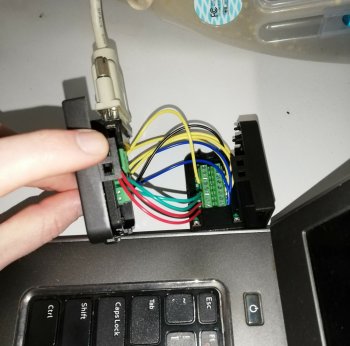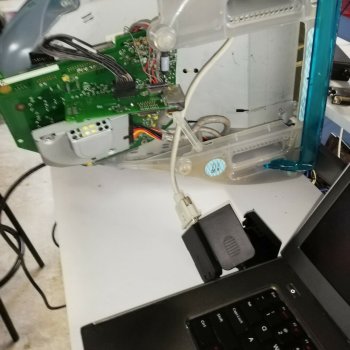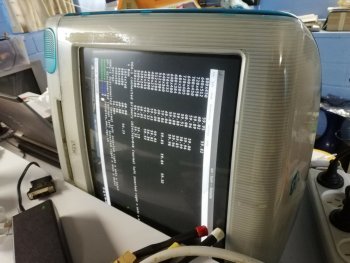Jumping on to the end of this thread, however please let me know if I should start a separate one.
Rocky pointed out to me earlier that my iMac 333 (G3, Rev. D) was a much simpler setup than the later slot load models, and should work with just a straight RGBHV connection and no other modifications or I2C commands needed.
I made myself a connector to convert from the DE15 VGA connection on my laptop to the DB15 connected on my iMac, fed a 1024x768@75Hz mode to the screen via the DB15 RGB cable, and with the logic board plugged in (custom ATX connector and "audio" header that includes connections to the power button), I get a picture. Wonderful!
I've then removed the logic board, and powered on the CRT portion itself by shorting pins 23 and 24 of the power connector via a ~500ohm resistor to send +5V to the power on header. This turns the power light from off to orange/red, and gets the system fan spinning.
I then feed the same 1024x768@75Hz signal to the screen, the power light turns green, and I can hear the fan spin a little harder as well as the degausse coil click on and off, as if the CRT itself is turning on. However I get no picture, just a black screen.
Is there anything else I need to do here to get a picture? Zero changes to the RGB cable (swapping the logic board back in brings the picture back)
Pictures of it working with the logic board plugged in (RGB cable to my laptop, and not the header on the logic board):
View attachment 942289
View attachment 942288
View attachment 942290




